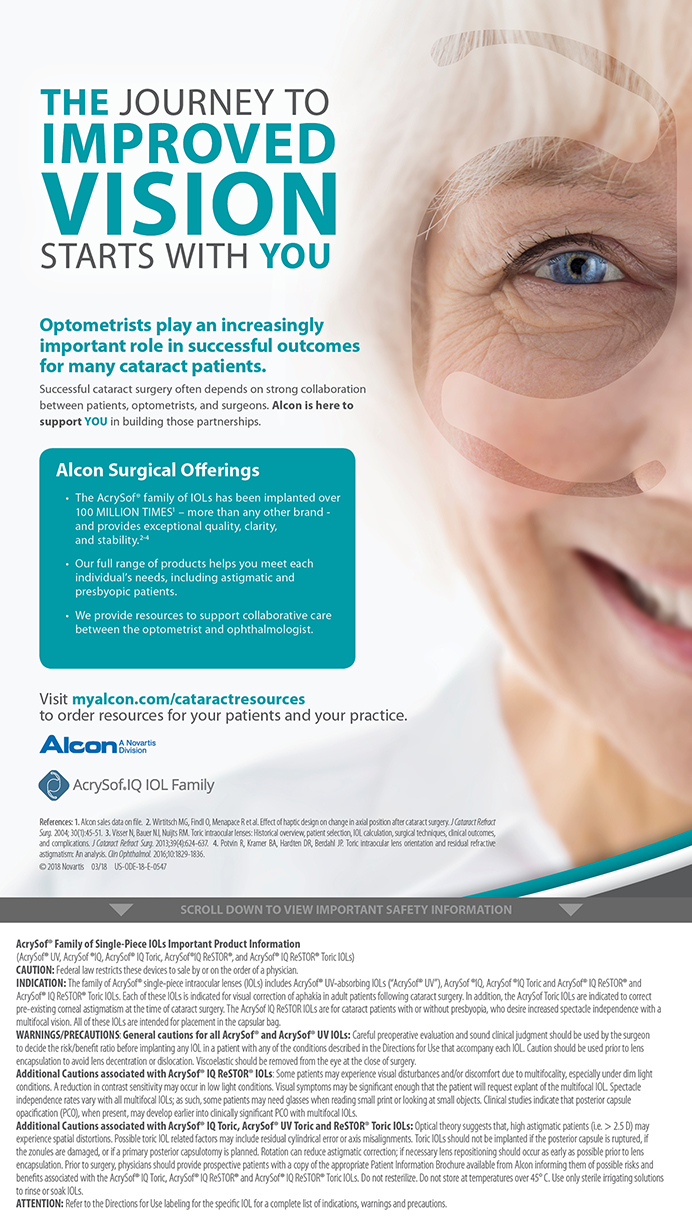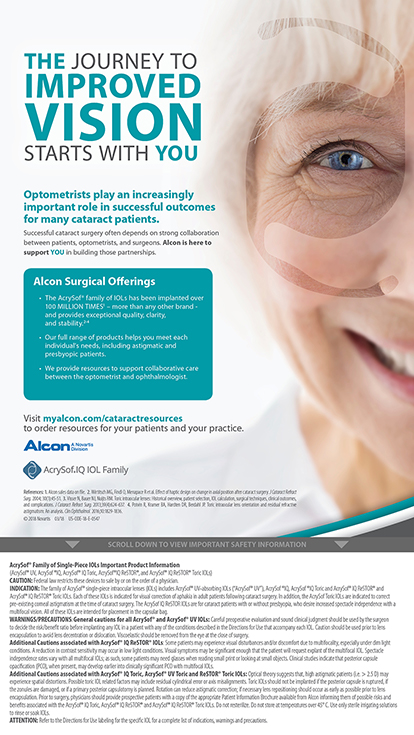The list of pharmaceutical therapies for dry eye disease (DED) used to be quite short, and many of the options were off-label uses of drugs not designed to treat the condition. DED management is entering a new era—one in which drugs are designed with specific DED indications in mind. In addition, a new device offers a nonpharmaceutical option to stimulate tear production, and another is on the way.
PHARMACEUTICAL PIPELINE
OTX-101 (cyclosporine A 0.09%, Sun Pharma) is a preservative-free nanomicellar formulation of cyclosporine A in a stronger formulation than has been previously available. It is under review for approval by the US Food and Drug Administration following positive results in a phase 3 study. In that phase 3 trial, 744 patients with DED were treated with OTX-101 or vehicle for 12 weeks. OTX-101 demonstrated efficacy and faster onset of action than drugs in the same class.1 Adverse events reported were classified as mild to moderate and similar to those of approved drugs in the same category.
KPI-121 (loteprednol etabonate ophthalmic suspension 0.25%, Kala Pharmaceuticals) utilizes a mucus-penetrating particle technology to increase the penetration of this familiar steroid. A pair of phase 3 clinical trials (STRIDE 1 and STRIDE 2) had mixed results. STRIDE 1 met its sign and symptom primary endpoints (improvements from baseline in hyperemia and ocular discomfort, respectively). STRIDE 2 met the hyperemia endpoint but failed to meet the endpoint of ocular comfort severity change from baseline at day 15.2
A phase 2 trial of P-321 (Shire PLC and Parion Sciences) is evaluating this epithelial sodium channel inhibitor for the treatment of tear volume deficiency and the promotion of ocular surface healing. The drug is thought to block the absorption of tears, thereby allowing the ocular surface to maintain hydration. If approved, P-321 would offer a different approach to DED management than other pharmaceutical therapies that target ocular inflammation.3
DEVICE PIPELINE
The »TrueTear neurostimulation device (Allergan) entered the DED market in limited release in the summer of 2017. The device will reach a broader audience and greater patient accessibility this year. The unit, inserted into the nose, provides neurostimulation to the trigeminal nerve. This approach offers a drug-free, drop-free option to patients. Several clinical studies of the device have been completed. The OCUN-009 study met the primary effectiveness endpoint of increased tear production over basal tears as measured by Schirmer test during application.4 Adverse events were classified as mild, and no subjects discontinued the study due to device-related adverse events. A subsequent study found an increase in the mucin and aqueous layers of the tear film.5
The »iLux device (Tear Film Innovations) is another device in the pipeline, designed to be used in an office setting. The device is about the size of an electronic toothbrush and is easily transportable. The doctor clasps the patient’s eyelid between two disposable tips and applies heat generated by LEDs to warm harden meibum in the patient’s meibomian glands. The doctor can see the meibomian glands through a magnifier at the top of the device as the device applies force to extract the liquefied meibum. The procedure averages a few minutes per eye to complete. The device is set to launch in 2018.6
THE FUTURE AND THE FAILURES
The journey down the pipeline is a bumpy one, and it often leads to dead ends. Many investigational drugs thought to be the next big thing in DED never see pharmacy shelves or optometric practices due to inadequate performance in pivotal trials. Doctors and patients alike only see the compounds that run the gauntlet and survive. Let’s hope many more are successful so that patients can benefit.
- Sun Pharma Announces US FDA Acceptance of NDA for OTX-101 [press release]. Sun Pharma; Mumbai, India; December 27, 2017.
- Kala Pharmaceuticals Announces Topline Results for Two Phase 3 Trials (STRIDE 1 and STRIDE 2) of KPI-121 0.25% in Dry Eye Disease [press release]. Kala Pharmaceuticals; Waltham, MA; January 5, 2018.
- Shire and Parion Sciences Enter into a Collaborative License Agreement to Advance P-321 for Ophthalmic Indications [press release]. Parion Sciences; Lexington, MA; May 1, 2017.
- Holland EJ, Baba SN, Senchyna M, Holdbrook MJ. Intranasal tear neurostimulation for subjects with dry eye disease: results from 2 pivotal clinical trials. Paper presented at: American Academy of Ophthalmology Annual Meeting; November 12, 2017; New Orleans, LA.
- Lee SH, Senchyna M, Kamat M, Baba SN. Total tear lipid and total protein concentrations following intranasal tear neurostimulation in subjects with dry eye. Paper presented at: American Academy of Ophthalmology Annual Meeting; November 12, 2017; New Orleans, LA.
- iLux. Company website. www.tearfilm.com/ilux-device.






